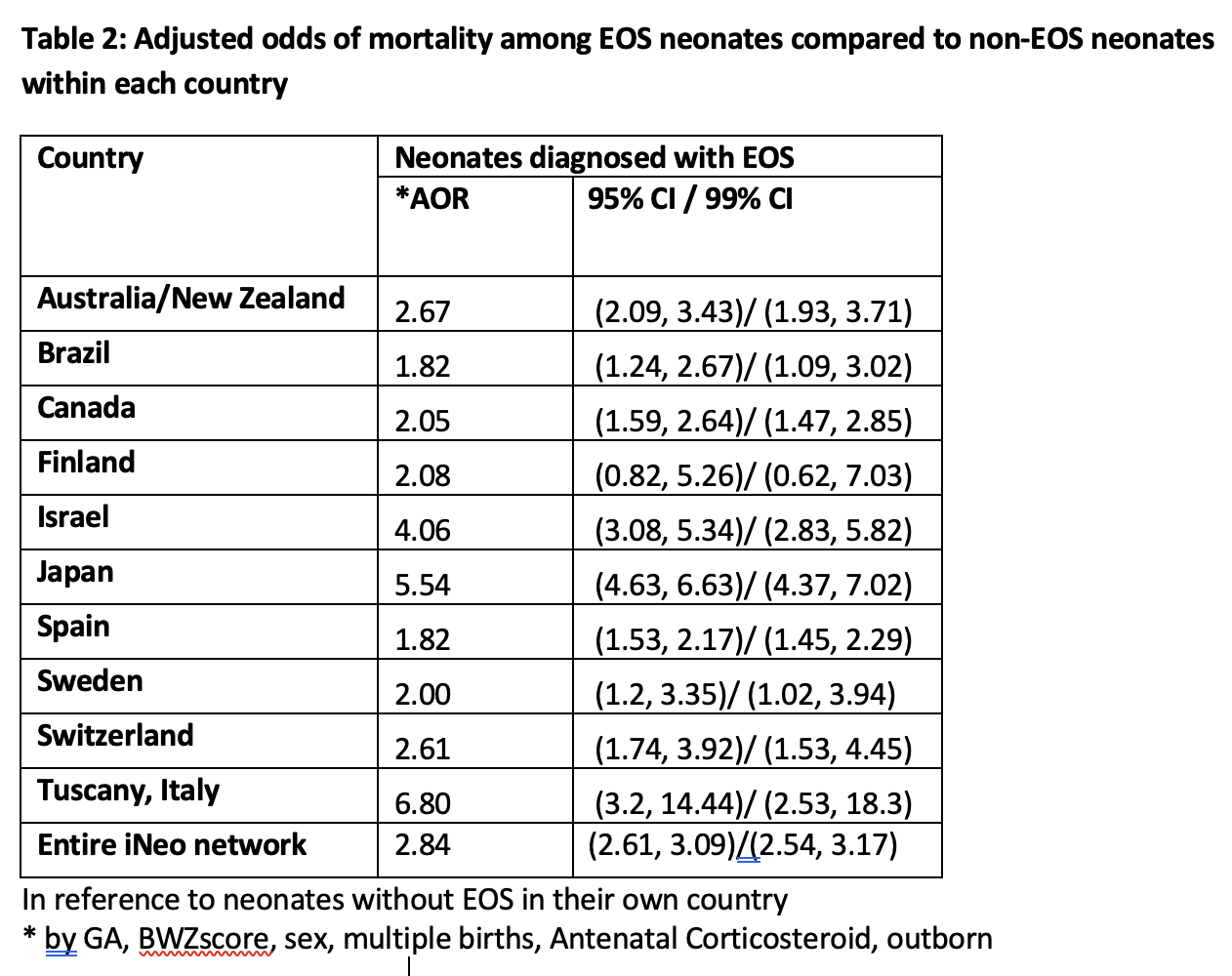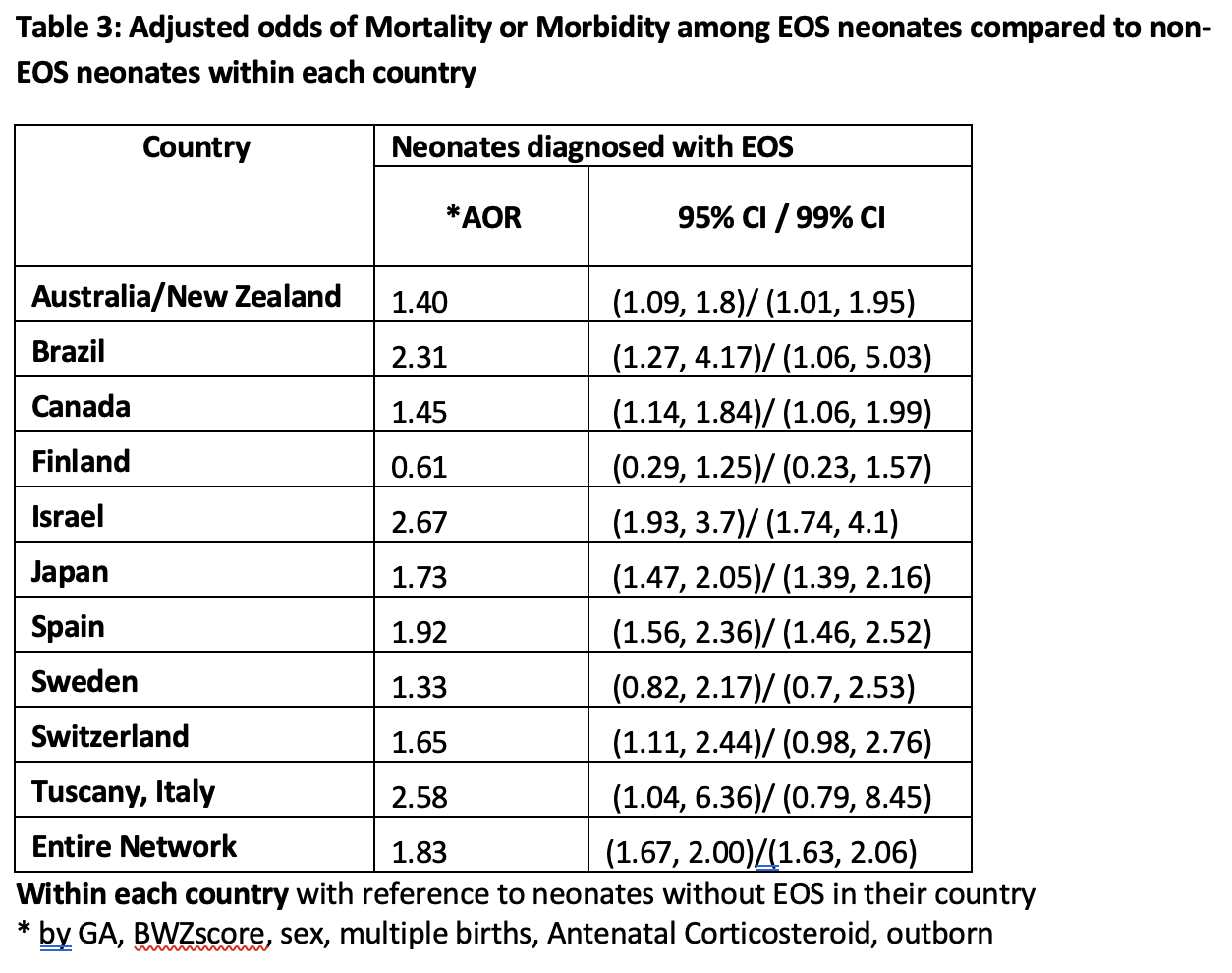Neonatology
Session: Neonatal General 5: PDA, Surgical Conditions, Infections
138 - Early-onset infections in preterm neonates of 24 – 28 weeks’ gestation: An international cohort study
Sunday, May 5, 2024
3:30 PM - 6:00 PM ET
Poster Number: 138
Publication Number: 138.2274
Publication Number: 138.2274

Kei Lui, MBBS MD FRACP
Professor
University of New South Wales
Sydney, New South Wales, Australia
Presenting Author(s)
Background: The preterm neonates are at risk of developing early-onset sepsis (EOS). However, there are limited international comparisons of EOS incidence, mortality, and morbidity.
Objective: To compare incidence rates and probability of mortality/morbidity among extremely premature (EPT) neonates diagnosed with EOS across eleven countries (Australia, New Zealand, Brazil, Canada, Finland, Israel, Japan, Spain, Sweden, Switzerland, and Tuscany (Italy)).
Design/Methods: Data from the International Network for Evaluation of Outcomes (iNeo) for Neonates of neonates admitted between 24 and 28 weeks’ gestation (EPT) to a neonatal intensive care unit enrolled in one of the eleven participating country registries between 1 January 2007 and 31 December 2020 were evaluated. Neonates with a birth weight of >1500g and born with a major congenital abnormality were excluded. Morbidity was classified as severe neurological injury, treated retinopathy of prematurity, stage 2 or 3 necrotising enterocolitis, late-onset sepsis, or bronchopulmonary dysplasia. Risks of mortality and major morbidities among neonates with EOS and without EOS were evaluated within each country after adjusting for GA, BWZscore, sex, multiple births, antenatal corticosteroid, and outborn status.
Results: The overall rate of EOS was 31.9/1000 admissions with variability of 19-66/1000 neonates between countries (Table 1). Of those diagnosed with EOS compared to those that were not, the overall odds of mortality was 2.84 (95%CI 2.61-3.09) (Table 2) and of mortality or morbidity was 1.83 (95%CI 1.67-2.00) (Table 3) with some variability in odds among countries.
Conclusion(s): Between 2-6% of neonates are born with EOS in this international cohort and infants with EOS had overall high odds of mortality and morbidity compared to those who did not develop EOS.
.png)


